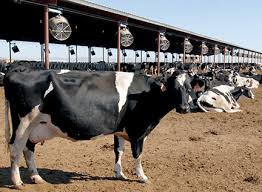Old mine dump turned into mega solar farm
IN an impressive feat of environmental rehabilitation and green energy transformation ingenuity, a local mining company has turned a decades old waste dump site that was an environmental ticking time bomb threatening the lives of humans and livestock into a solar farm that feeds electricity into a whole gold mining entity in Bubi District, Matabeleland North Province.
The solar farm comprises of 8 064 solar panels, 36 inverters and four transformers producing an impressive output of 4.4MW that is fed into Turk Mine, situated about 55km from Bulawayo along Nkayi Road, to run effectively off the national grid during the day when it is peak time for the solar panels to harvest power.
The rehabilitated waste dump site, known as a tailings dam in mining language, covered an area of 3.6 hectares, which is the same area that the new solar farm now sits on.
A tailings dam is an earth-fill embankment dam used to store by-products of mining operations after separating the ore from the gangue — in this case commercially valueless material after gold has been extracted.
The tailings dam was a whopping 1.5 million tonnes of waste, accumulated over decades of mining and was inherited by Turk Mine from the previous owners, some who had been mining in the area as far back as the 1920s.
The solar farm is today a testament of the good that can come out when mining entities accelerate environmental rehabilitation projects, as well as responsible mining activities that plough back positively to the communities where the extraction of precious minerals takes place.
Turk Mine’s safety, health, environment and quality officer, Mr Taurai Danda, explained how the solar project, which motorists using the Bulawayo-Nkayi Road can see clearly with its massive solar panels and a dedicated team of women wiping them every day, stands today after years of working to rehabilitate an old tailings dam.
“The history behind some of the tailings dams that used to surround this mine is that they were very old, or as far back as the 1920s. Although we might not have the exact dates, today we see the effects of those works in the environment,” he said.
“The old tailings dam that we inherited covered an area of approximately 70 hectares and we made a decision as a mine in 2013 to start a project that would address the issue of waste around the mine and its potential consequences to the environment.
“In the first 10 years, we moved over 1.5 million tonnes of waste to a new designed tailings dam. What today stands as a solar farm used to be decommissioned tailings dam, which was neglected and its waste used to be washed off by rain into Mbembesi River close by the mine,” said Mr Danda.
“All this was happening slowly year after year but we would try to bring in ideas to mitigate its effects on the environment by, for example, putting sand bags to stop the flowing of waste from the slime dams into water sources.”
He said after rehabilitating the land where the old tailings dam used to be, a decision was made to construct a solar farm on that same area instead of clearing virgin land, thereby preserving land.
To put it into contest, Mr Danda said the construction of the solar farm not only preserved virgin land by constructing it on a rehabilitated waste dump site but is also equivalent to saving 5.4 million kilogrammes of coal that is needed to produce 4.4MW of electricity.
Millions of litres of water are needed to produce the same output of electricity if it’s thermally produced.
“The solar farm is on reclaimed 3.6 hectares of land that used to be a tailings dam out of the 70 hectares of land that is covered by the tailings dams we inherited from the previous owners and we are happy that this project is a step in the right direction is rehabilitating waste dump sites and managing the environment,” said Mr Danda.
“The new tailings dam is a well monitored and controlled site that conforms to international standards in the management of mine waste and EMA (Environmental Management Authority),” he added.
“The reclamation process that we embarked on the tailings dam involved the use of earth moving machinery, highly pressurised water, labour and a lot of intense planning.”
The official, however, said the mine has been facing challenges in trying to plant trees on the new tailings dam to revive vegetation around the area for long term sustainability.
“There is a time when we tried to plant trees on the new tailings dam but the state of our waste doesn’t allow any meaningful vegetation to grow on such a site but let me hasten to add that the one good thing about the waste we have is that once it is compacted it forms a claylike material that is not easily washed away or blown by the wind,” he said.
“Around the new tailings dam we have put in effective measures such as bonding walls that collect any waste washed from the tailings dam so that the water doesn’t contaminate the environment by flowing into streams and rivers,” he said.-herald










